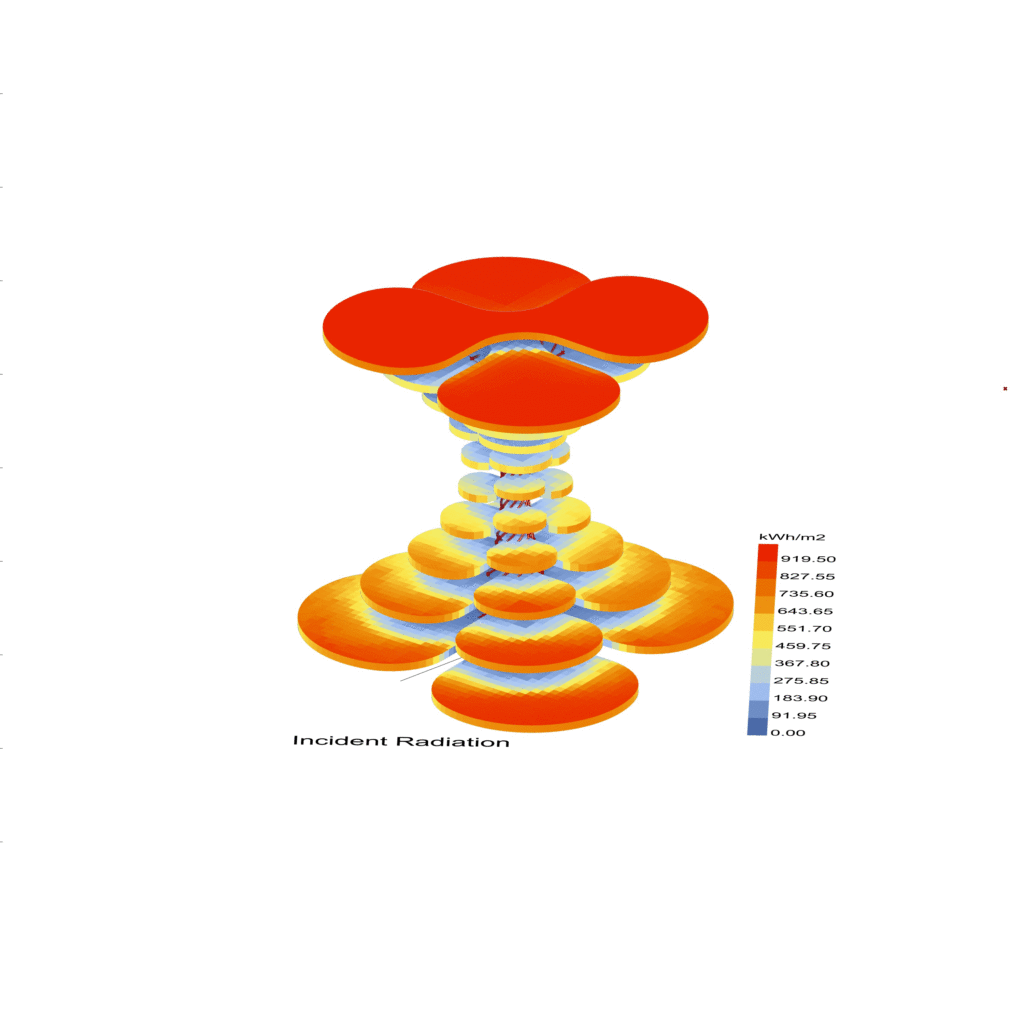
Through a meticulous analysis of data extracted from the site and a comprehensive understanding of Barcelona’s climatic conditions, our visionary project sets its sights on the future, envisioning Barcelona in the year 2050 as a harmonious blend of urban living and natural serenity. At the heart of our exploration lies the theme of urban forestry, a paradigm shift in architectural design that strives to seamlessly integrate nature within the urban fabric.
In our pursuit of a sustainable and vibrant future, we have ingeniously conceived a building designed to house not only a community of people but also a thriving forest ecosystem. The crux of our innovation lies in the fusion of climatic data analysis and cutting-edge design technology. Leveraging Grasshopper scripts, meticulously calibrate the building’s form to respond dynamically to the climatic nuances of Barcelona.
Project Introduction
Leveraging Grasshopper scripts, meticulously calibrate the building’s form to respond dynamically to the climatic nuances of Barcelona.
In essence, this project not only envisions a sustainable and nature infused urban future for Barcelona but also stands as a testament to the innovative fusion of data-driven design, climatic responsiveness, and human-centric aesthetics. As we propel ourselves toward 2050, our building stands as a symbol of progress, embodying the potential for a symbiotic relationship between urbanity and the natural world.
Project Goal
With our Computation Design Project, where we explore the intricate relationship between Architecture and Sustainability. With the aid of the Ladybug plugin for Grasshopper and the Galapagos evolutionary solver, we’re delving into the complex dynamics of solar radiation on buildings.
Our focus lies in optimizing the building’s design by analyzing radiation levels, varying slab heights, and rotating slabs to maximize solar exposure. This approach not only enhances energy efficiency but also facilitates the growth of urban greenery. By harnessing computational design and evolutionary algorithms, we aim to create a blueprint for sustainable urban development.

Form Analysis
One of the key breakthroughs in our approach is the creation of a Grasshopper script that precisely determines the height between slabs based on radiance levels. The radiance achieved in specific areas not only influences the structural design but also dictates the potential for larger green spaces within the building. This adaptive design ensures that the internal environment optimally supports both human habitation and the flourishing urban forest.
Furthermore, our commitment to environmental consciousness is evident in the staggered and rotated outer perimeter of the slabs. This deliberate arrangement serves a dual purpose – not only does it contribute to the balanced distribution of radiance across each slab, but it also creates an aesthetically pleasing and dynamic architectural form. Human intervention in the design process is thus skillfully managed to achieve a harmonious balance between functionality and beauty.

Design Optimization
Pseudo code & work-flow

Form Exploration

Initial Iterations

Radiation Catalogue

Final Iteration



Iterating Radiance Data
One of the key breakthroughs in our approach is the creation of a Grasshopper script that precisely determines the height between slabs based on radiance levels. The radiance achieved in specific areas not only influences the structural design but also dictates the potential for larger green spaces within the building. This adaptive design ensures that the internal environment optimally supports both human habitation and the flourishing urban forest.

Representative Render

Grasshopper Script


